“How do you write your comics?” is a question I get every now and then from convention attendees, usually young writers looking for the right format in which to express their ideas. It’s also a topic discussed among established writers when they get together.
It really depends on the individual. The independent market has a fairly loose approach. Image’s Todd McFarlane once stated during the early days of writing and drawing his series Spawn that his method was to have an idea for a story, draw the issue, and then arrange the pages in the order he thought worked best. (Then again, he was essentially writing for himself, without the input of an editor, so he could do that.) My friend J. D. Calderon—author of the fantasy novel series The Oswald Chronicles and the anthropomorphic epic-fantasy comic series Tall Tails—generally writes his scripts in short story/novella format and gives his artists the freedom to pace the comic version as they see fit.
In mainstream comics, there are two styles: full scripting, and what’s known as “the Marvel Method.”
Full scripting is exactly what it sounds like: the writer provides everything for the artist to work from—dialogue, character descriptions, settings, sometimes even camera angles. It’s similar to writing a movie screenplay, only the end result will be static images on paper instead of action on a screen. The scripts of Alan Moore (Swamp Thing, The League of Extraordinary Gentlemen, V for Vendetta) are known for being massive tomes—even the short ones. For example…
(Hope you’ll excuse all the capitalized words—Moore isn’t Internet-screaming, he just writes his descriptions with the cap-lock on.)
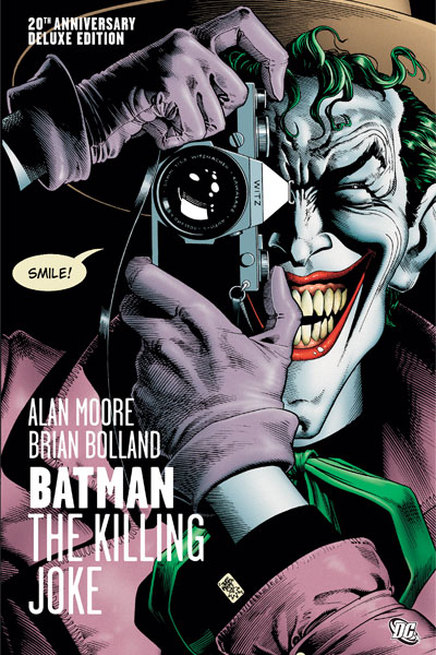 PAGE 1
PAGE 1
(PANEL) 1.
WELL, I’VE CHECKED THE LANDING GEAR, FASTENED MY SEATBELT, SWALLOWED MY CIGAR IN A SINGLE GULP AND GROUND MY SCOTCH AND SODA OUT IN THE ASHTRAY PROVIDED, SO I SUPPOSE WE’RE ALL SET FOR TAKE OFF. BEFORE WE GO SCREECHING OFF INTO THOSE ANGRY CREATIVE SKIES FROM WHICH WE MAY BOTH WELL RETURN AS BLACKENED CINDERS, I SUPPOSE A FEW PRELIMINARY NOTES ARE IN ORDER, SO SIT BACK WHILE I RUN THROUGH THEM WITH ACCOMPANYING HAND MOVEMENTS FROM OUT CHARMING STEWARDESS IN THE CENTRE AISLE.
FIRSTLY, SINCE I’M NOT ENTIRELY SURE HOW THESE GRAPHIC NOVELS ARE SET OUT, MIGHT I SUGGEST THAT IF THERE ARE END-PAPERS OF ANY KIND THEY MIGHT BE DESIGNED SO AS TO FLOW INTO AND OUT OF THE FIRST AND LAST PANELS OF THE STORY. SINCE BOTH THE FIRST AND LAST PANELS CONTAIN A SIMPLE CLOSE-UP IMAGE OF THE SURFACE OF A PUDDLE RIPPLED BY RAIN, THEN MAYBE A SIMPLE ENLARGEMENT OF A BLACK AND WHITE RIPPLE EFFECT TO THE POINT WHERE IT BECOMES HUGE AND ABSTRACT WOULD BE IN ORDER? AS WITH ALL MY VISUAL SUGGESTIONS, BOTH HERE AND IN THE PANEL DESCRIPTIONS BELOW, PLEASE DON’T FEEL BOUND IN BY THEM IN ANYWAY. THEY’RE ONLY MEANT AS WORKABLE SUGGESTIONS, SO IF YOU CAN SEE A BETTER SET OF PICTURES THAN I CAN (WHICH I’D SAY IS QUITE LIKELY, ALL THINGS CONSIDERED) THEN PLEASE FEEL FREE TO THROW OUT WHAT I’VE COME UP WITH AND SUBSTITUTE WHATEVER YOU FEEL LIKE.
I WANT YOU TO FEEL AS COMFORTABLE AND UNRESTRICTED AS POSSIBLE DURING THE SEVERAL MONTHS OF YOUR BITTERLY BRIEF MORTAL LIFESPAN THAT YOU’LL SPEND WORKING ON THIS JOB, SO JUST LAY BACK AND MELLOW OUT. TAKE YOUR SHOES AND SOCKS OFF. FIDDLE AROUND INBETWEEN YOUR TOES. NOBODY CARES. ANOTHER GENERAL NOTE WOULD REGARD STYLE AND PRESENTATION. I’VE ALREADY GONE INTO THIS IN THE SYNOPSIS, SO I WON’T DWELL ON IT TOO MUCH HERE, EXCEPT TO UNDERLINE A COUPLE OF THE MORE IMPORTANT POINTS, ONE SUCH POINT WOULD BE OUR TREATMENT OF THE BATMAN AND HIS MYTHOS, INCLUDING THE BATMOBILE, THE BATCAVE AND WHATEVER OTHER ELEMENTS MIGHT FIND THEMSELVES INCLUDED IN THE STORY BEFORE IT’S END. AS I SEE IT, THIS STORY ISN’T SET IN ANY SPECIFIC TIME PERIOD. WE DIDN’T SHOW ANY CALENDARS, OR ANY NEWSPAPERS WITH HEADLINES CLOSE ENOUGH TO READ THE DATE. THE ARCHITECTURE AND THE SETTINGS IN GENERAL THAT WE SEE ARE EITHER OBVIOUSLY OLD AND DATES, AS IN THE CARNIVAL SEQUENCES, OR HAVE AN AMBIGUOUS ORT OF LOOK TO THEM THAT’S BOTH FUTURISTIC AND ANTIQUE AT THE SAME TIME, AS WITH THE FLEISCHER-SUPERMAN/LANG’S METROPOLIS LOOK THAT I SEE OUR VERSION OF GOTHAM CITY AS HAVING, AT LEAST ON IT’S UPPER LEVELS. THE LOWER AND SEEDIER LEVELS OF GOTHAM ARE MORE INCLINED TOWARDS A TERRITORY SOMEWHERE BETWEEN DAVID LYNCH AND THE CABINET OF DR. CALIGARI, ALL PATCHES OF RUST AND MOULD AND HISSING STEAM AND DAMP, GLISTENING ALLEYWAYS. I IMAGINE THIS STRIP AS HAVING AN OPPRESSIVELY DARK FILM NOIR FEEL TO IT, WITH A LOT OF UNPLEASANTLY TANGIBLE TEXTURES, SUCH AS YOU HABITUALLY RENDER SO DELIGHTFULLY, TO GIVE THE WHOLE THING A REALLY INTENSE FEELING OF PALPABLE UNEASE AND CRAZYNESS. SINCE I KNOW THAT YOU LIKE USING LARGE AREAS OF BLACK ANYWAY, THEN MIGHT I SUGGEST THAT WE USE THE DARK AND SHADOWY NATURE OF OUR BACKDROPS AND THE BLACKNESS OF THE BATMAN’S COSTUME TO GIVE US AS MANY INTERESTING PRIMARILY-BLACK COMPOSITIONS AS WE CAN GET AWAY WITH? THE FACT THAT THE JOKER IS SUCH A BLEACHED AND BLOODLESS WHITE PLAYS OFF INTERESTINGLY AGAINST THIS, I RECKON, SO PLEASE FEEL FREE TO GO COMPLETELY LOOPY WITH THE QUINK ON THIS ONE. AS FAR AS THE CHARACTERS THEMSELVES GO, I’LL DESCRIBE THEM IN DETAIL WHEN THEY MAKE THEIR APPEARANCES, BUT MY ONLY GENERAL NOTE WOULD BE THAT LIKE THE LANDSCAPE AND THE VARIOUS PROPS, THEY HAVE A SORT OF TIMELESS AND MYTHIC QUALITY TO THEM WHICH DOESN’T FIX THEM FIRMLY IN ANY ONE AGE-RANGE OR TIME-PERIOD. THE JOKER LOOKS EITHER OLD OR BADLY DEPRAVED, BUT THEN HE’S ALWAYS LOOKED THAT WAY. THE BATMAN IS BIG AND GRIM AND OLDER THAN WE ARE, BECAUSE AS I REMEMBER THE BATMAN HE’S ALWAYS BEEN BIGGER AND OLDER THAN I AM AND I’LL FIGHT ANY MAN THAT SAYS DIFFERENT. GIVEN THIS TIMELESS AND MYTHIC QUALITY, IT ALSO STRIKES ME THAT THERE ARE CERTAIN ELEMENTS OF THIS STORY THAT HAVE STRONG OPERATIC ELEMENTS. BOTH THE BATMAN AND THE JOKER HAVE A POWERFUL OPERATIC QUALITY TO THEIR APPEARANCE IN THAT THE JOKER IS AN EXTREME VERSION OF THE HARLEQUIN FIGURE WITH THE BATMAN’S CAPE AND MASK LOOKING LIKE SOMETHING STRAIGHT OUT OF DIE FLEDERMAUS. I DUNNO WHY I MENTION THIS EXCEPT TO UNDERLINE THE SORT OF GRAND EMOTIONAL INTENSITY I WANT THIS BOOK TO HAVE WITH BOTH THE BATMAN AND THE JOKER BECOMING POWERFUL AND PRECISE SYMBOLIC FIGURES IN A NIGHTMARISH AND ALMOST ABSTRACT LANDSCAPE. ANYWAY, BEFORE I WANDER OFF INTO A COMPLETELY IMPENETRABLE AESTHETIC FOG I SUPPOSE WE OUT TO ROLL OUR SLEEVES UP AND GET STRAIGHT DOWN TO BUSINESS WITHOUT FURTHER ADO.
THIS FIRST PAGE AND A COUPLE OF THE SUBSEQUENT ONES HAVE NINE PANELS APIECE, ALBEIT WITH VERY LITTLE OR NO DIALOGUE TO CLUTTER THEM UP. I WANT THE SILENCE AND THE METRONOME-LIKE VISUAL BEAT THAT THE PANELS WILL HAVE TO CREATE A SENSE OF TENSION AND INTRIGUE AND SUSPENSE WITH WHICH TO DRAG THE READER INTO THE STORY, WHILE STILL LEAVING US ENOUGH ROOM TO SET UP ALL THE NARRATIVE AND ATMOSPHERIC ELEMENTS THAT WE WANT TO ESTABLISH.
IN THIS FIRST PANEL, WE HAVE A TIGHT CLOSE UP OF THE SURFACE OF A PUDDLE. (SEE? AND THERE WAS YOU ALL WORRIED THAT I WOULDN’T GIVE YOU ANYTHING FASCINATING TO DRAW.) WE ARE SO CLOSE TO THE PUDDLE AS TO SEE IT ONLY AS AN ALMOST ABSTRACT IMAGE OF WIDENING RIPPLES SPREADING ACROSS A SHADOWY AND BLACK LIQUID SURFACE. IT IS NIGHT TIME, AND THE RIPPLES THAT WE SEE IN THE FOREGROUND ARE CAUSED BY LARGE DROPLETS OF RAIN THAT FALL THROUGH THE FOREGROUND IN DIAGONAL SLASHES. MAYBE WE CAN SEE ONE DROPLET AS ITS PRECISE MOMENT OF IMPACT WITH THE PUDDLE, SO CLOSE ARE WE TO IT. ALTHOUGH I DON’T SUPPOSE THAT THIS INFORMATION WILL MAKE MUCH DIFFERENCE TO THIS CURRENT PANEL, FOR YOUR FUTURE REFERENCE IT IS MID NOVEMBER AND BITTERLY COLD. HERE, ALL WE SEE IS THE RAIN SPLASHING INTO THE PUDDLE AND THE SILVERY WHITE RIPPLES SPREADING OUT ACROSS THE DARKNESS.
No Dialogue.
* * *
That’s the opening of Moore’s script for one of his most famous works, the graphic novel Batman: The Killing Joke. And that’s just his introduction and description for Page 1, Panel 1; the script for the first twelve pages of the book runs 39 pages! (script sample courtesy of The Comic Book Script Archive.)
 On the opposite end of the spectrum, the Marvel Method is similar to J. D.’s approach, only slightly tighter: The writer—with the guidance of an editor—breaks the plot into a page-by-page description, one paragraph for each page. That’s passed along to the pencil artist, who decides how best to visually present the story and sets the pacing. When the pencils have been completed, the writer then comes back to script the dialogue. It’s how Stan Lee and artists like Jack Kirby and Steve Ditko were able to churn out so many comics in Marvel’s early days. (It’s also how one of Kirby’s most famous co-creations, the Silver Surfer, came about. For a Fantastic Four story he thought a giant alien like Galactus—who was coming to eat the Earth—needed a herald/advance scout to let everyone know they were doooomed, and added a shiny metal guy riding a surfboard who wasn’t in the plot. Lee just went with it.)
On the opposite end of the spectrum, the Marvel Method is similar to J. D.’s approach, only slightly tighter: The writer—with the guidance of an editor—breaks the plot into a page-by-page description, one paragraph for each page. That’s passed along to the pencil artist, who decides how best to visually present the story and sets the pacing. When the pencils have been completed, the writer then comes back to script the dialogue. It’s how Stan Lee and artists like Jack Kirby and Steve Ditko were able to churn out so many comics in Marvel’s early days. (It’s also how one of Kirby’s most famous co-creations, the Silver Surfer, came about. For a Fantastic Four story he thought a giant alien like Galactus—who was coming to eat the Earth—needed a herald/advance scout to let everyone know they were doooomed, and added a shiny metal guy riding a surfboard who wasn’t in the plot. Lee just went with it.)
It doesn’t work for everyone, though. After trying it one time, writer John Rozum (Xombi, Static Shock) blogged about the disadvantages of using the Marvel Method:
What happens, and this is by no means the fault of the artist, is that the story comes back looking fantastic until you sit down to the dialogue for the art. Expressions and body language are wrong for supporting the proper feelings being conveyed in dialogue, characters are on the wrong side of panels (or even missing) disrupting the flow of speech between them, the panel that requires the greatest amount of text will be the smallest on the page, as often ends up happening to the panel which should be the largest and most dramatic. Important props end up missing, etc.
Now me, I’m a full-scripting advocate. I love setting the scene and exploring the inner workings of characters to help the artist I’m working with better understand the people they’re drawing. (I’m also something of a control freak.) And if you hop over to the Pandora Zwieback site I’ll show you how I applied full scripting to a Pan comic book project I’m sure you’re all familiar with by now.
That’s right—you’re experiencing StarWarp Concept’s first crossover event. Take that, Avengers vs. X-Men! 😀
(Batman: The Killing Joke script sample © DC Comics.)
 In 2011, The ’Warp introduced dark-urban-fantasy readers to my novel series The Saga of Pandora Zwieback through “The 13 Days of Pan-demonium”—a celebration of the publication of Blood Feud: The Saga of Pandora Zwieback, Book 1. Well, I figured, why not do the same thing for StarWarp Concepts’ first horror heroine, the succubus Lorelei, and her brand-new Mature Readers graphic novel Lorelei: Sects and the City, which is on sale right now?
In 2011, The ’Warp introduced dark-urban-fantasy readers to my novel series The Saga of Pandora Zwieback through “The 13 Days of Pan-demonium”—a celebration of the publication of Blood Feud: The Saga of Pandora Zwieback, Book 1. Well, I figured, why not do the same thing for StarWarp Concepts’ first horror heroine, the succubus Lorelei, and her brand-new Mature Readers graphic novel Lorelei: Sects and the City, which is on sale right now?


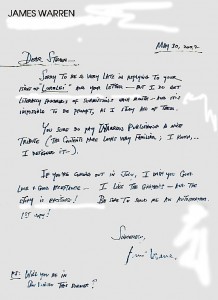

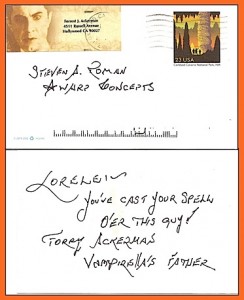

 Anyway, as we here at The ’Warp get ready to debut Lorelei: Sects and the City—our fantastic Mature Readers graphic novel that features art by Eliseu Gouveia (Pandora Zwieback, A Princess of Mars) Steve Geiger (Web of Spider-Man) and Neil Vokes (Fright Night), which is about to go on sale—I thought the time was perfect to show off some of the reactions I’ve received about our favorite soul-stealing succubus over the years—from big-time professionals, no less!
Anyway, as we here at The ’Warp get ready to debut Lorelei: Sects and the City—our fantastic Mature Readers graphic novel that features art by Eliseu Gouveia (Pandora Zwieback, A Princess of Mars) Steve Geiger (Web of Spider-Man) and Neil Vokes (Fright Night), which is about to go on sale—I thought the time was perfect to show off some of the reactions I’ve received about our favorite soul-stealing succubus over the years—from big-time professionals, no less!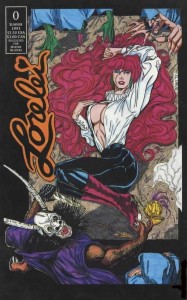
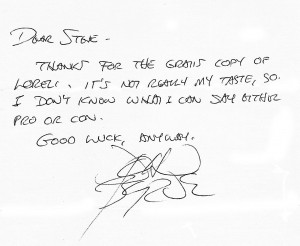

 From May 10 to June 26 of this year, the city of Beja, Portugal, celebrated its eighth annual International Comics Festival—and ’Warp characters Pandora Zwieback and Lorelei both made appearances in an art gallery exhibition at the festival that celebrated the work of the incomparable
From May 10 to June 26 of this year, the city of Beja, Portugal, celebrated its eighth annual International Comics Festival—and ’Warp characters Pandora Zwieback and Lorelei both made appearances in an art gallery exhibition at the festival that celebrated the work of the incomparable 
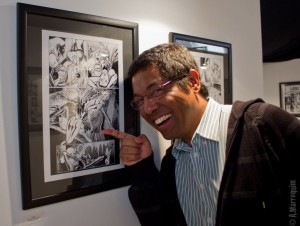

 Well, this is great news: Gothic Beauty—the magazine of Goth-inspired fashion and culture—has reviewed our first illustrated classic, J. Sheridan Le Fanu’s vampire novella
Well, this is great news: Gothic Beauty—the magazine of Goth-inspired fashion and culture—has reviewed our first illustrated classic, J. Sheridan Le Fanu’s vampire novella  PAGE 1
PAGE 1
 It’s DVDuesday, as they say on G4-TV’s Attack of the Show! Today is the release date for Disney’s John Carter, the movie adaptation of Edgar Rice Burroughs’s science fantasy novel, A Princess of Mars. But don’t just run out and buy the movie—do yourself a favor and pick up a copy of The ’Warp’s special edition of Burroughs’s action-packed tale.
It’s DVDuesday, as they say on G4-TV’s Attack of the Show! Today is the release date for Disney’s John Carter, the movie adaptation of Edgar Rice Burroughs’s science fantasy novel, A Princess of Mars. But don’t just run out and buy the movie—do yourself a favor and pick up a copy of The ’Warp’s special edition of Burroughs’s action-packed tale. Today is the big-screen debut of the epic fantasy Snow White and the Huntsman, starring Charlize Theron (Prometheus), Kristen Stewart (Twilight), and Chris Hemsworth (The Avengers). There’s been a lot of positive buzz about the film, which (very) loosely adapts “Snow White,” the Brothers Grimm’s classic fairy tale that celebrates its 200th Anniversary this year.
Today is the big-screen debut of the epic fantasy Snow White and the Huntsman, starring Charlize Theron (Prometheus), Kristen Stewart (Twilight), and Chris Hemsworth (The Avengers). There’s been a lot of positive buzz about the film, which (very) loosely adapts “Snow White,” the Brothers Grimm’s classic fairy tale that celebrates its 200th Anniversary this year.





